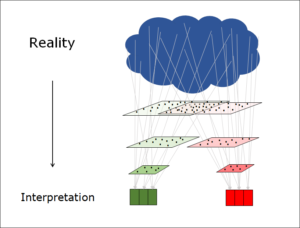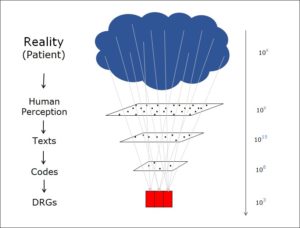Framing matters
The framing effect is a topic that comes up a lot these days. Framing is the phenomenon whereby the same message is perceived differently, depending on what additional information is sent with it. The additional information is provided to give the message the right ‘frame’ so that recipients respond appropriately.
Even if the additional information is undoubtedly true, the recipient can be genuinely manipulated by framing, simply by the selection of details that are in themselves factually correct. Framing is, of course, used in advertising, but its role in political reporting has become something of a hot topic of late.
Of course, framing in politics and advertising always involves choosing words that connect an item of information to the corresponding emotional content. But the simple fact that some aspects (details) of events are drawn into the foreground and some pushed into the background changes the image that the recipient forms of the message. For example, our response to the fact that a lot of refugees/migrants want to come to Europe depends on which of the many people we have in mind and which of the diverse range of aspects, reasons, circumstances and consequences of their journey we focus on. Reports about the criminal activities of individual migrants evoke a completely different image from descriptions of the inhuman, unfathomably awful conditions of the journey. That people are coming is a fact. But the way this fact is evaluated – its interpretation – is a matter of simplification, i.e. the selection of data. This brings us clearly to the phenomenon of information reduction.
Framing and information reduction
Real-world situations always contain much more detail than we can process. And because this means we always need to simplify them, information selection plays a crucial role: what do we bring to the forefront and what do we push into the background? The answer to this question colours our perception and thus our opinion. This phenomenon of information reduction is the same as that encountered in medical coding, where a variety of characteristics are drawn upon – or disregarded – in the assignment of codes (see article Two types of coding 1). The reduction and selection of information is part of all perception processes, and our actions and decisions are always based upon simplifications. The selection of details is what shapes our perception, and this selection depends not upon the object being viewed, but on the subject making the selection.

Diverging interpretations are possible (see previous article)
Reality (top of the diagram) is made up of all the facts, but our interpretation of it is always based upon a selection from this vast array of detail. This may lead us to form a range of different opinions. I believe that this phenomenon of information reduction (the interpretation phenomenon) is both fundamental and inescapable, and that it plays an important role in a wide range of different contexts. The framing effect is a typical example, but it is one of many.
Links to framing (in German):
– Spiegel article “Ab jetzt wird zurückgeframt” of 22.2.2019
– Wikipedia.de on the framing effect
– Interview with communication trainer Benedikt Held
This is a page about information reduction — see also overview.
Translation: Tony Häfliger and Vivien Blandford
